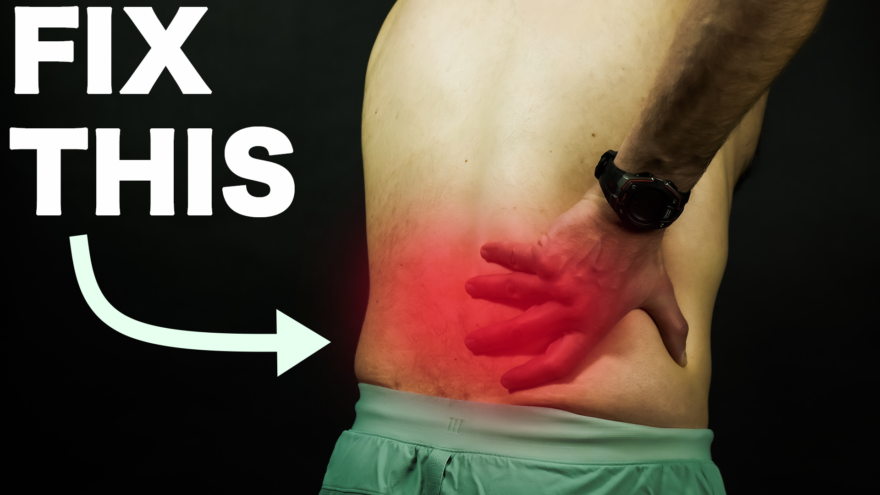Table of Contents
Most simple lower back pain issues can be helped with these moves
If there is one condition that has absolutely no clarity on how to fix it, it’s lower back pain.
There are countless opinions and recommendations out there about how to manage it. Some say NEVER flex your lower back. Keep it stiff at all times. Or just move more!
But are these beliefs sound?
That’s what we will explore in this blog post. You’ll not only learn what to NOT do for back pain, but how you can fix it.
Check out the blog, video, and podcast to learn more.
Low back pain myths
Research has shown that lifting with some spinal flexion at lower loads can be safe. Those who have low back pain intentionally lift with less flexion.
So we shouldn’t avoid flexion or keep our spine stiff at all times. But moving more isn’t always the answer either. What if it hurts to move?
We have to dig deeper.
But how can we achieve this? Depending on which direction hurts when you move, you may need to learn how to shift. To shift internal fluids–synovial, visceral, air–in different directions. Doing so can redistribute the workload and reduce pressure on the back.
Where we need to shift fluid depends on which movement hurts. Here, we will break down 3 of the most common pains:
- Flexion intolerance
- Extension intolerance
- Rotation intolerance
Flexion intolerance
Flexion intolerance occurs when it hurts to bend forward.
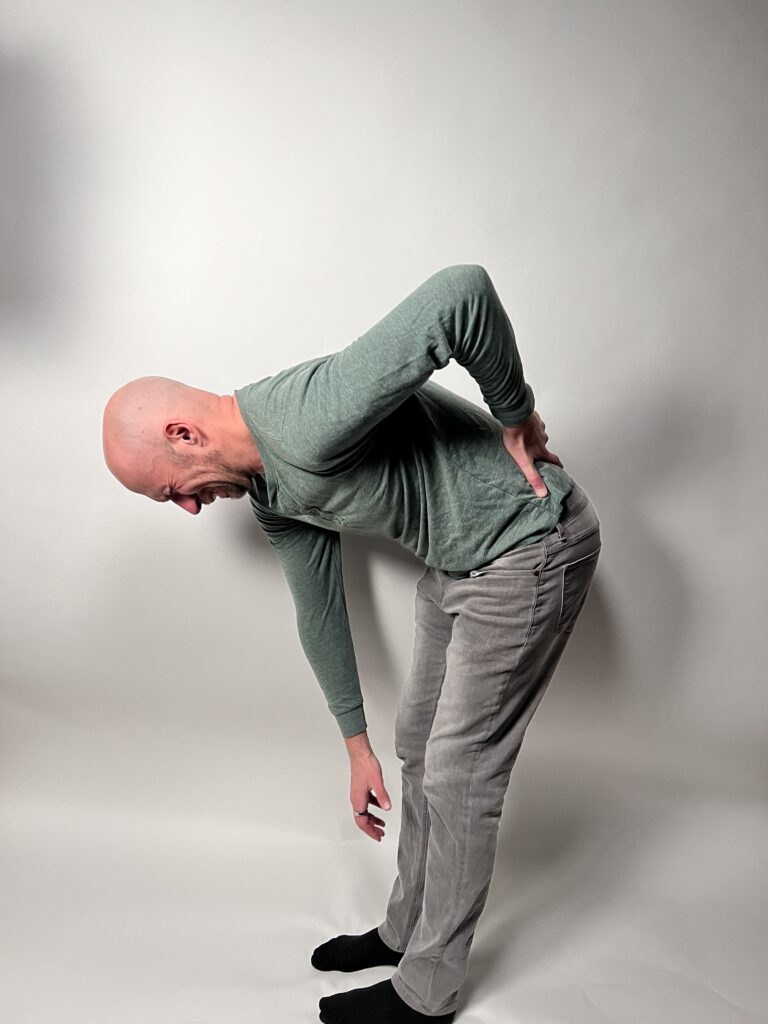
To bend forward, the following must occur:
- The spine must “round”
- The pelvis must shift backward
Most people lack the shifting hips backward component.
A move I use to facilitate this is the retro crawl on elbows. It helps the posterior pelvis become eccentric.
Performance keys:
- Start by positioning yourself on your forearms.
- Knees right under your hips and elbows right under your shoulders.
- Glance up at your fingertips: Look up at your fingertips to help align your head and neck.
- Inhale through your nose.
- Exhale while pushing your torso slowly away from the ground. Be careful not to crunch or arch as you do this. Your chest and abs should move together, keeping pressure on the ground.
- Lift your elbow and opposite knee up. Inhale and lift, sliding it back about an inch.
- Exhale and lower your elbow and opposite knee down.
- Repeat on the other side: Performing 4 sets of 5 steps per side.
Extension intolerance
Extension intolerance is pain that occurs when you bend backward. This movement requires compressing the posterior spine, which isn’t a bad thing. It’s normal.
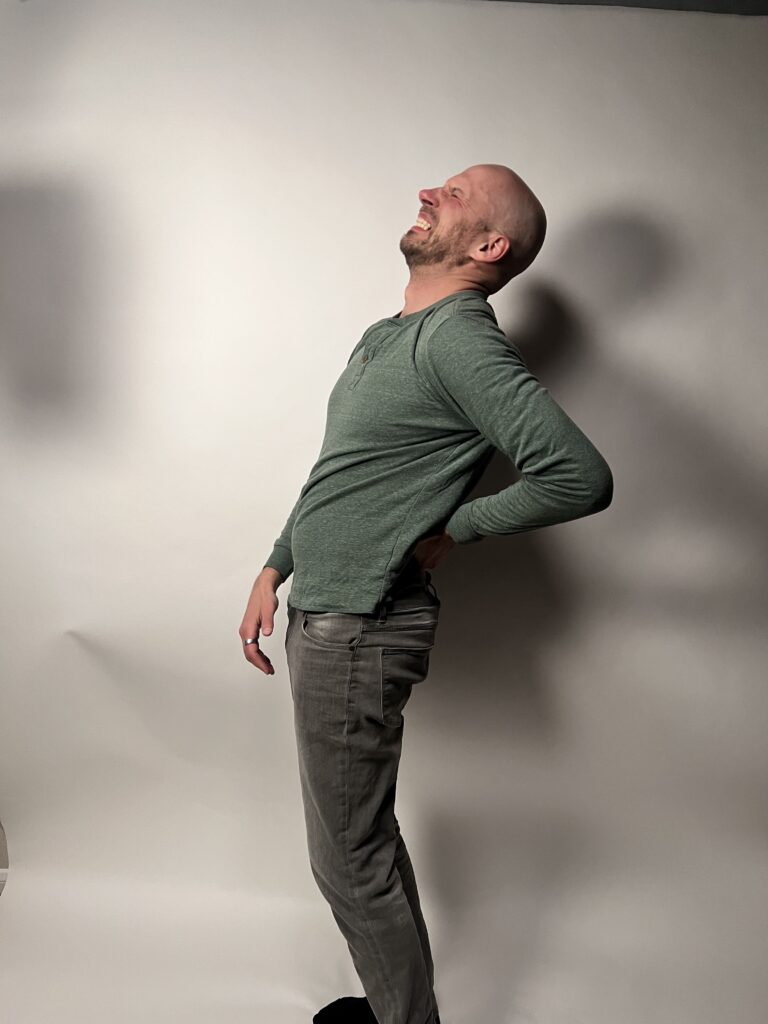
It becomes a problem if there isn’t enough space to compress into. That increases pressure in this area and can contribute to pain.
So the fix involves increasing space posteriorly. I like a Lewit same connect for this:
Performance keys:
- Lie on your back with feet on the wall
- Yoga block between same-side elbow and knee. Squeeze the block and slowly reach the elbow towards the wall.
- Press the opposite leg inner heel and big base into the wall
- Silent inhale through your nose
- Soft exhale through the mouth
- Perform 4 sets of 5 breaths per side
Rotation intolerance
Rotation intolerance occurs when it hurts to twist your trunk.
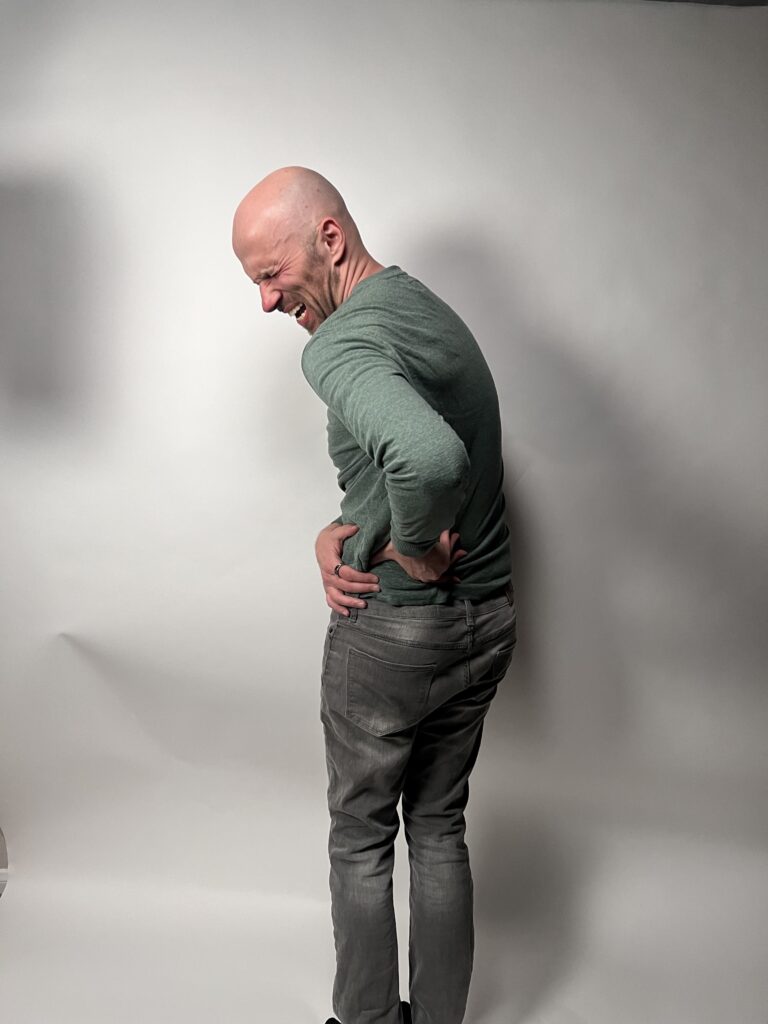
Rotating requires a combination of the above activities. If I rotate to the left, I must:
- Expand posteriorly on the left
- Expand anteriorly on the right
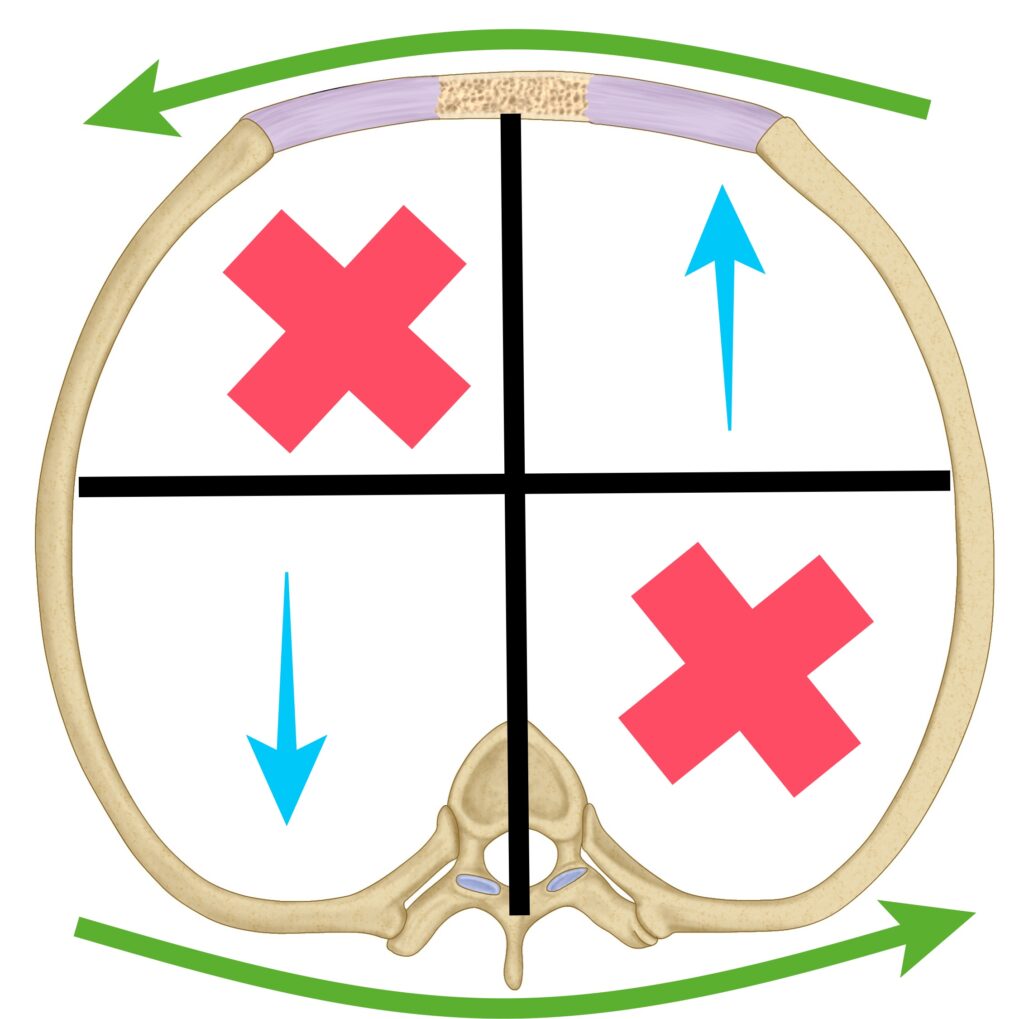
And I must do so at each segment. Most people may only move at a few segments.
To create this multisegment movement, I like a sidelying same connect roll:
Performance keys:
- Lie on your side
- Top arm and leg squeeze a yoga block. Reach the arm and leg low
- The bottom arm grips the opposite ribcage
- Silent nose inhale and roll to your back. Make sure you keep a straight line from your nose to your zipper
- Mouth exhale and return to the start
- Perform 3 sets of 10 rolls per side
Sum up
These exercises help relieve many common back pain issues by better distributing pressure. Problems arise when loads become more pinpoint. Increasing overall movement options can help reduce this phenomenon.
What movements do you use to reduce back pain? Comment below and let us know.
